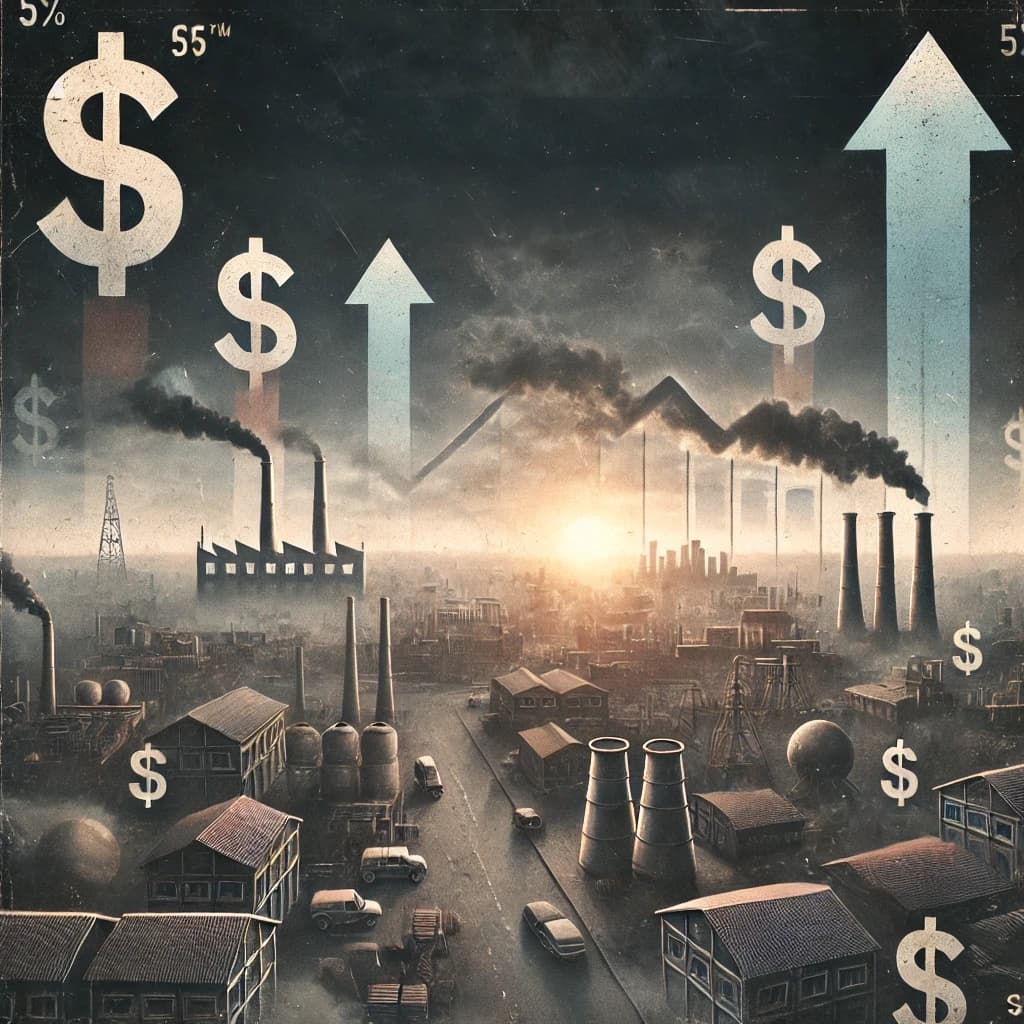What is Stagflation? Understanding This Mysterious Economic Situation

What is Stagflation?
Economic crises are situations that surprise and challenge many people. However, stagflation is a bit different from other types of crises. Normally, during an economic downturn, inflation tends to be low because demand decreases. But in stagflation, these two opposing effects occur simultaneously: the economy stagnates while prices continue to rise rapidly. So, what does stagflation mean?
Simply put, stagflation is a situation where both unemployment rises and prices keep increasing. The term "stagflation" itself is a combination of the words “stagnation” and “inflation.”
How Does Stagflation Occur?
Economists have put forward several theories to explain the causes of stagflation. Here are some of them:
-
Demand and Supply Shocks: When a country experiences a sudden supply shock, such as a sharp increase in oil prices, production costs rise. This leads to higher prices for goods and services. At the same time, consumer spending decreases due to these high prices, and economic growth slows down.
-
Poor Management of Monetary Policies: If central banks print excessive money to stimulate the economy, this can lead to inflation in the long run. However, when inflation occurs without economic growth, stagflation can emerge.
-
High Unemployment and Low Growth Rates: When unemployment rises while growth rates fall, the risk of stagflation increases. Production slows down, but prices continue to rise. This creates a difficult situation for job seekers.
Effects of Stagflation on Daily Life
Stagflation directly affects the daily lives of ordinary people. Here are a few concrete examples:
-
Rising Food Prices: For example, a family may notice that their weekly grocery bill keeps increasing, even though the items in their shopping cart remain the same. This is because food prices tend to rise rapidly during stagflation periods.
-
Insufficient Salaries: As a working person, it can be frustrating to see the prices of everything increase while your salary stays the same. You’re still earning the same amount, but it’s becoming harder to make ends meet.
-
Difficulty Finding Jobs: During stagflation, unemployment rates also rise. As a result, finding a job becomes even more challenging, especially for new graduates or job seekers.
Historical Examples of Stagflation
Throughout history, many countries have experienced stagflation. The oil crises of the 1970s, in particular, are among the most well-known examples of stagflation worldwide.
-
1970s Oil Crisis: In 1973, when oil prices quadrupled, production costs increased in many countries, and inflation soared. This, in turn, caused a rise in unemployment rates, resulting in serious stagflation.
-
Japan’s Stagnation Period: Japan experienced an economic slowdown in the 1990s. While price increases were limited, low growth and high unemployment had a negative impact on the Japanese economy.
Current Concerns About Stagflation
In recent years, especially in the post-pandemic period, the risk of stagflation has been discussed in some countries. Rising energy prices, high inflation rates, and growth challenges in certain countries have brought the issue of whether stagflation will make a comeback into the spotlight.
Stagflation and Personal Saving Strategies
There are some saving and investment strategies that individuals can consider during a stagflation period:
-
Saving Money: During this time, it is important to avoid unnecessary spending and try to save as much as possible.
-
Reviewing Investment Options: Turning to fixed-income assets, gold, or foreign currencies may help protect against the effects of inflation.
Other Effects of Stagflation on the Economy
Stagflation not only affects individuals but also has serious macroeconomic implications. Governments face tough decisions during stagflation periods.
- Tax Increases and Spending Cuts: Governments may have to raise taxes or reduce spending to balance their budgets.
- Increase in Social Benefits: Due to high unemployment, it may be necessary to increase unemployment benefits and social assistance. This, in turn, adds extra burden to the government’s budget.
Is There a Solution to Stagflation?
Stagflation is a complex issue for economists, and finding a solution is equally difficult. Usually, finding a balance that both reduces unemployment and lowers inflation is a challenging process for governments.
There is no clear consensus on how to solve stagflation. Some economists believe tightening the money supply might be effective, while others argue that structural reforms are necessary. For example, investing in education and employment projects could help reduce unemployment. To lower inflation, fiscal policies could be revisited.
There are still many questions about how economic imbalances will be addressed and how the effects of stagflation can be reduced. What do you think will be the most effective methods to combat stagflation in the future?
